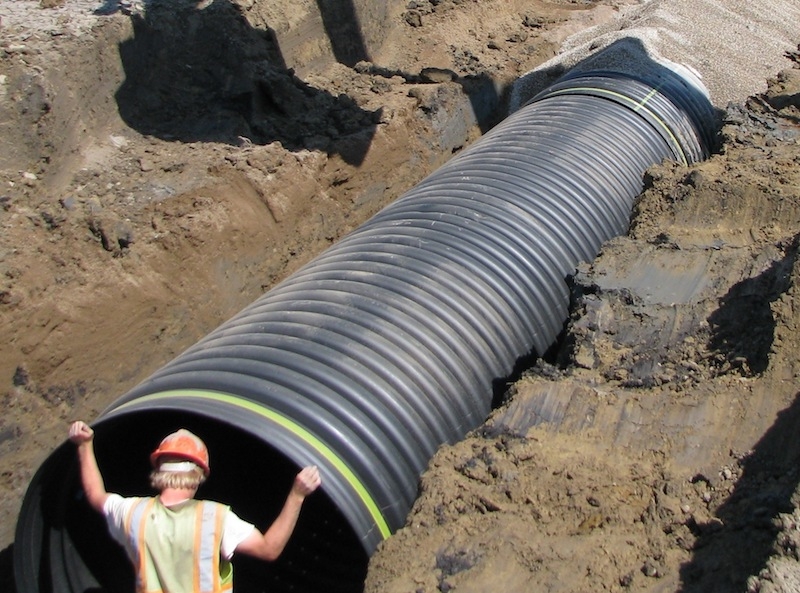
News
Making pipe from recycled plastic to reduce plastic waste
May 15, 2019 By Drainage Contractor
 HDPE pipe can be made using more than 40 percent recycled HDPE resin that was originally used in other
HDPE pipe can be made using more than 40 percent recycled HDPE resin that was originally used in other Formed earlier this year, the Alliance to End Plastic Waste comprises multinational members from across the plastics value chain working together to decrease plastic waste. The Alliance has committed $1 billion with the goal of investing $1.5 billion of the next five years to help end plastic waste in the environment.
Of the 30 companies involved in the formation of the Alliance, 12 are Plastics Pipe Institute (PPI) members. PPI, the North American trade association representing all segments of the plastic pipe industry, believes the new initiative will help to solve another significant problem aside from eliminating plastic waste – supplying recycled plastic to use in pipe.
Primarily used for underground stormwater infrastructure management and agricultural drainage projects, some high-density polyethylene (HDPE) pipe can be made using more than 40 percent recycled HDPE resin that was originally used in more common applications. One PPI member reports using more than 400 million pounds a year of recycled material. There’s currently more demand for the recycled material than there is supply. Finding a second life for plastic could be key to reducing plastic pollution and increasing the supply of recycled HDPE resin for the pipe industry.
“For decades, our members have been capturing the value of discarded plastics by using it to make plastic pipe,” Tony Radoszewski, president of PPI, stated in a press release. “Plastic milk bottles and detergent bottles have been recycled and incorporated into agricultural drainage pipe since the 1980s. Today, we are working with research firms and the American Association of Highway Transportation Officials (AASHTO) to produce storm water drainage pipe incorporating post-consumer recycled plastic for use in highway culverts.
“To make one standard 20-foot length of 48-inch diameter HDPE pipe, containing 40 percent recycled HDPE resin, it requires between 1,600 to 2,200 discarded bottles. Most stormwater drainage projects using this type of pipe run in the thousands of feet, sometimes even miles of pipe. This is how the plastic pipe industry uses an enormous number of post-consumer plastic bottles and takes what was formerly a solid waste issue to good use in beneficial, long-lasting projects. These bottles and containers that originally have a 60-day shelf life are now converted into a product that has a 100-year service life.”
The Alliance’s four main goals are projects for collection development, innovation to make recovering plastics easier, education and engagement of the government, businesses and groups, and to clean up major waste sites, such as specific rivers. In addition to these goals, there is what Radoszewski refers to as a “golden opportunity” to turn an increase in recycled waste into more recycled materials that have a second life in the pipe and infrastructure industry.
Print this page